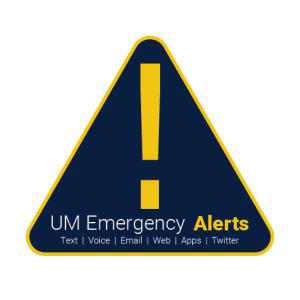Now that winter has departed and the rain showers have arrived, DPSS wants to remind the U-M community how to prepare for and respond to severe weather.
When preparing for potential severe spring and summer weather like tornadoes, thunderstorms and flooding, the most important thing you can do is have a plan. Ask yourself the following questions: how will I receive emergency alerts and warnings? What is my shelter plan? What is my evacuation route? What is my household or building communication plan? Knowing these answers ahead of time will help prepare you to face severe weather.
In addition to preparing and reviewing your severe weather plan, it is also important to have an emergency kit with items like water, food, a flashlight, a first aid kit, extra batteries and basic tools. These items are beneficial to keep in both your home and car, in case of emergency.
Community members are encouraged to sign up for UM Emergency Alerts to stay informed about major active emergencies, including severe weather incidents, impacting campus. This mass notification system sends alerts via text message, phone call, email, U-M Gateway and DPSS homepage, Michigan App, DPSS App and Twitter.
For more information about how to respond to severe weather, visit our safety tips page.
What’s the difference between a storm warning and a storm watch?
A storm watch means that conditions are favorable to produce severe weather.
A storm warning means that severe weather, such as a severe thunderstorm or tornado, has been detected in the area and people should seek immediate shelter to protect themselves.
